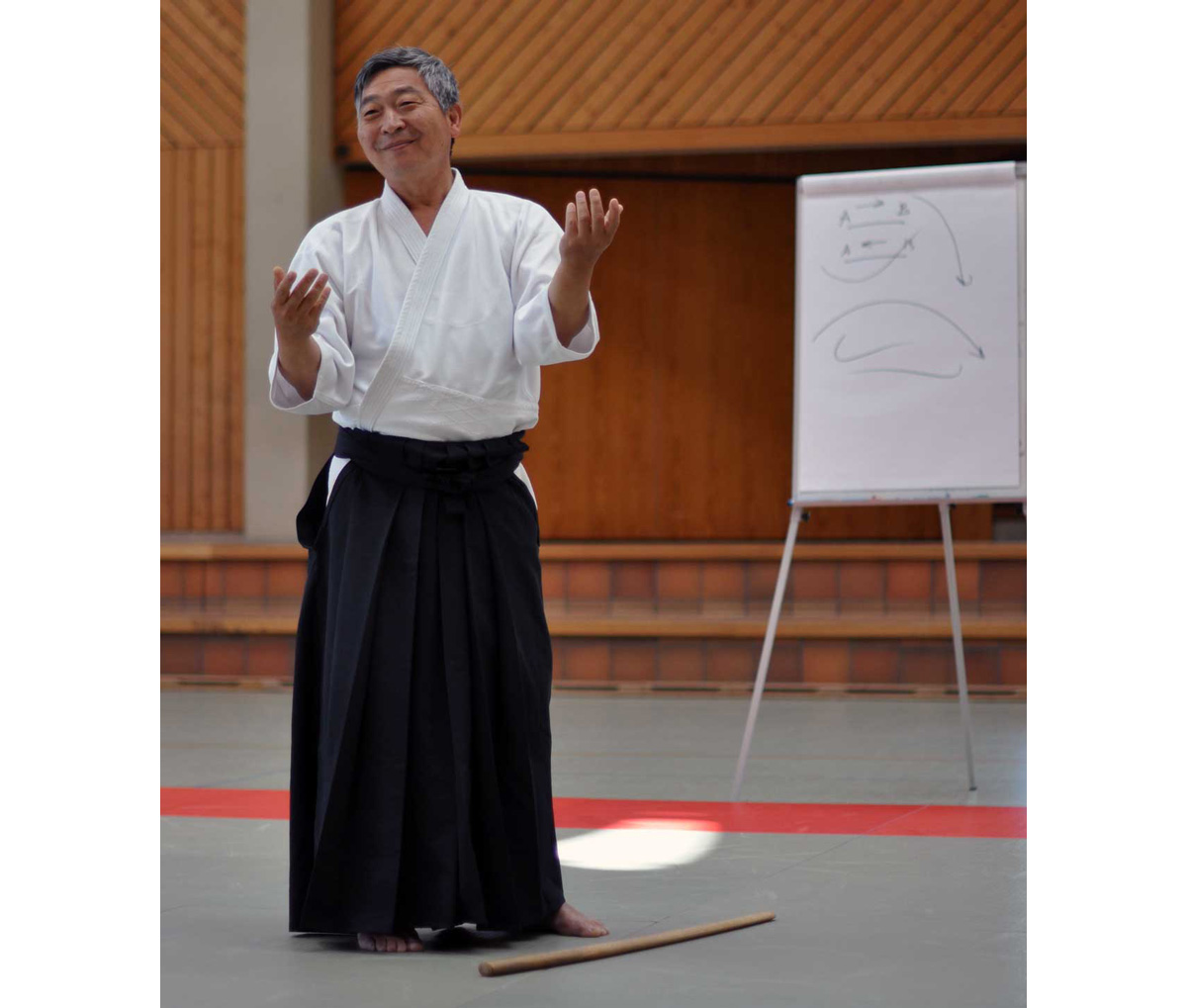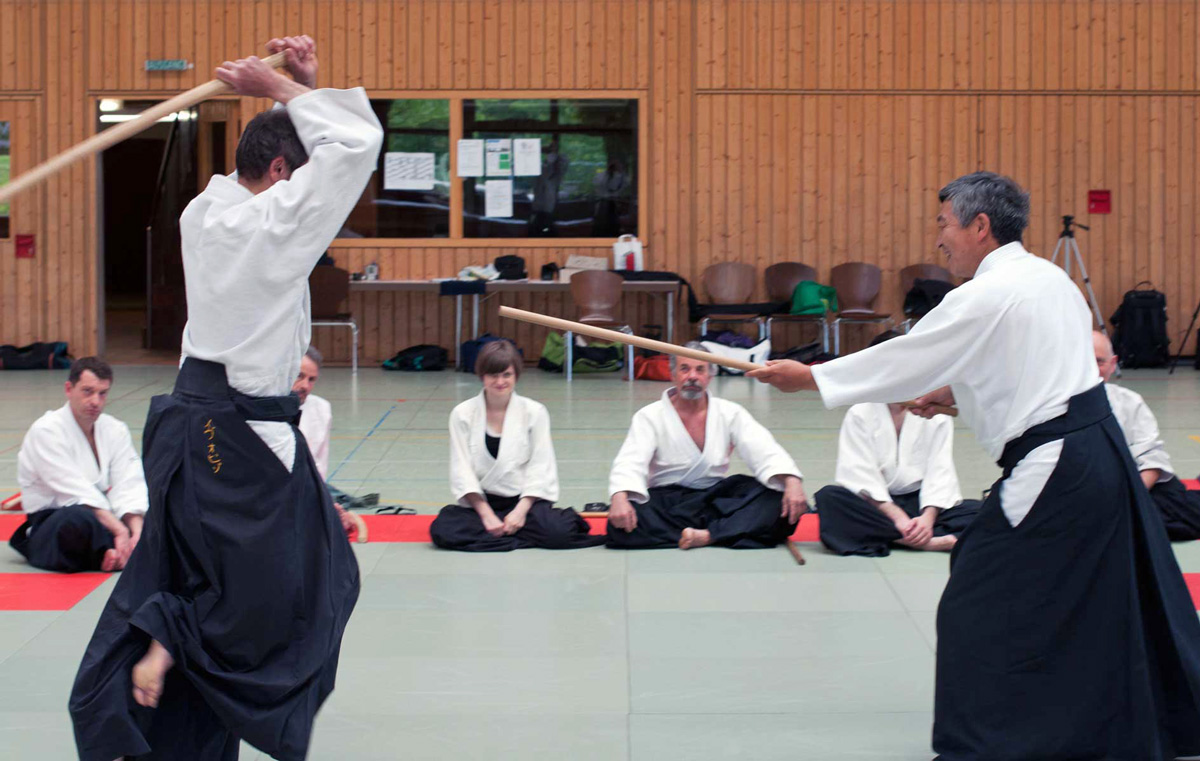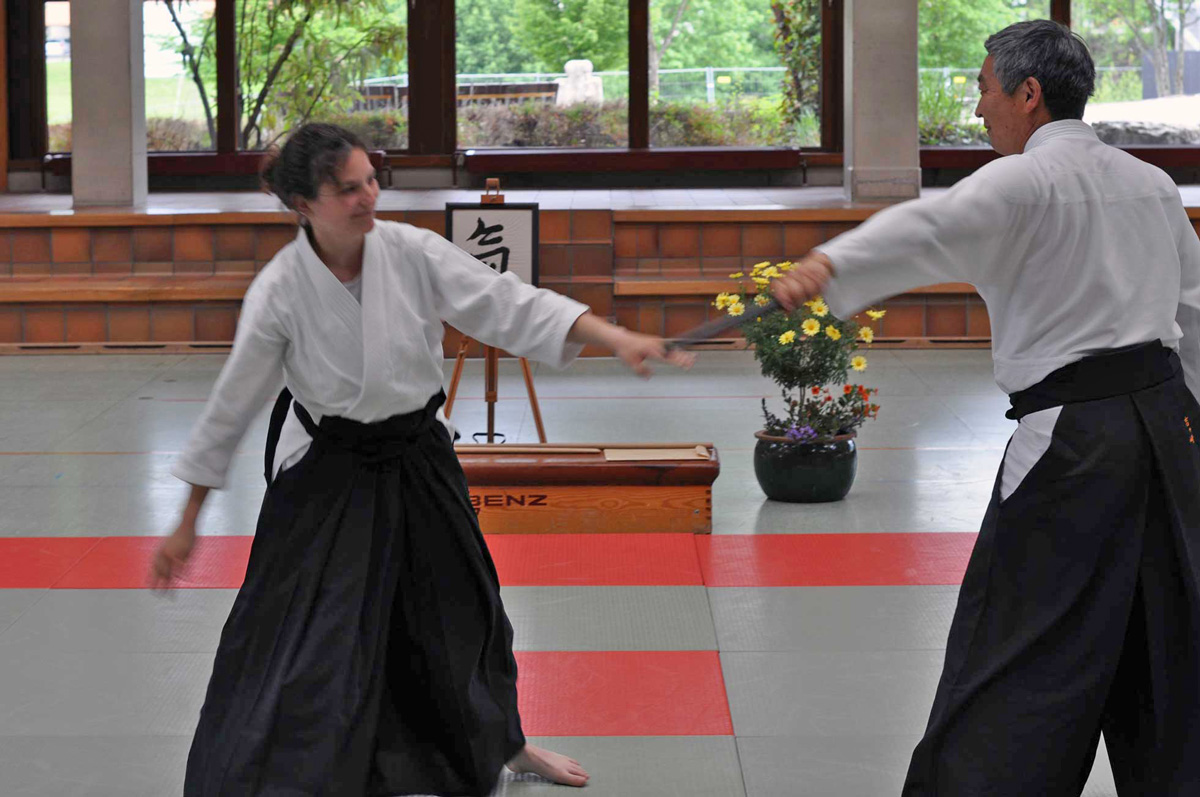
Arrival
As every year, the train from Brussels with Doshu Yoshigasaki arrived in Stuttgart late. An express train to Tübingen was waiting to depart right on the next track, so the Doshu joked that he could just continue on that train; we didn't even need to pick him up.
After a stop for lunch at Bernhard's in Tübingen, where Yvette prepared a delicious meal, we headed to the Witthauhalle in Haigerloch in the late afternoon. There, the hard-working aikidoka from Haigerloch and Balingen had already laid the huge tatami area.
Everything was well prepared, and Sensei was able to begin the first lesson. The main topic of the seminar were once again the lines, which serve as a theoretical introduction to help with the correct implementation of Aikido techniques. Detailed exercises were already practised on Friday evening.






